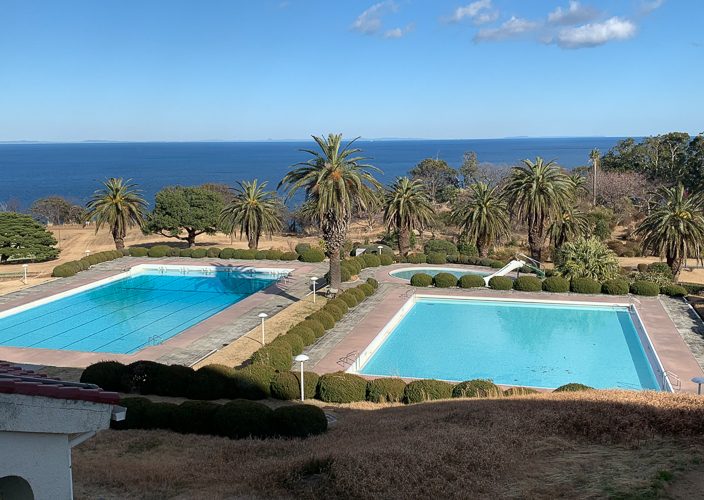Have you heard about “Hanachozu”? It’s recently becoming popular on social networks in Japan. I visited Shorin-ji temple and enjoyed beautiful Hanachozu.
Hanachozu
At shrines and temples, there is always a “Chozuya”. It’s a place where you wash your hands and rinse your mouth for purifying yourself. The flowers floating in that water are called “Hanachozu” (Chozu decorating flowers).
You can heal just by looking at the many beautiful flowers floating. And very photogenic! It’s basically a place to purify yourself, so be careful not to get in the way of others when shooting.
Not all shrines and temples have Hanachozu. Each shrine or temple that has Hanachozu has its own characteristics, so it’s fun to go around and checking out the Hanachozu.
Shorinji Temple
Shorin-ji Temple is a sub temple of nearby Tofuku-ji Temple located in a residential area, about a 10-minute walk from JR Tofukuji Station. Shorin-ji has two gates, the main gate and the east gate, and I entered from the east gate.
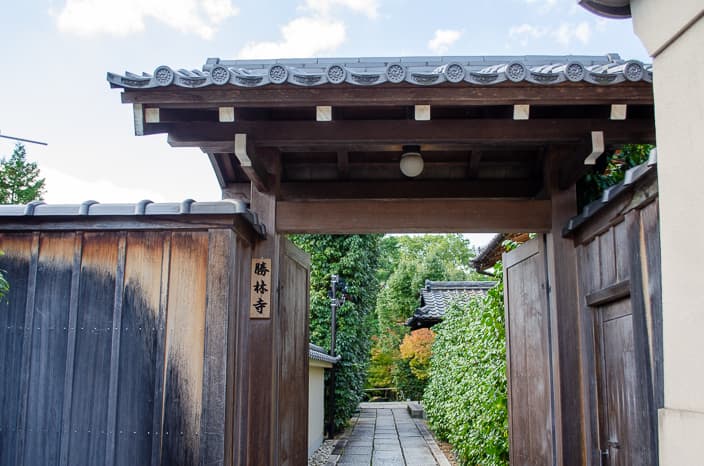
Shorin-ji temple is located in northeast of Tofuku-ji temple and Bishamonten is the principal deity enshrined here. Since it is a secret statue, it is not normally viewable to the public, but it seems that it will be open several times a year.
Here is the details of Shorin-ji temple according to the official website.
Tofukuji, established in 1236, is the oldest Buddhist temple in Kyoto and the head temple of the Rinzai sect of Buddhism. It is the largest and oldest temple complex in Japan.
Shorinji was founded as a sub-temple of Tofukuji in 1550 at the request of Kogaku Reisho, the 205th head priest of Tofukuji. Situated northeast of Tofukuji, an inauspicious direction, the temple is known as Bishomonten, after the guardian of the north and Buddhism. Among the temple’s many treasures are the standing statue of Bishamonten – the temple’s main statue closed to the public – and the large, powerful, sliding-door painting of tigers. Shorinji welcomes all visitors and offers experiences in zazen, and copying sutras and Buddhist images (reservations required). The gardens bloom with flowers year round. The cherry blossoms liven the grounds in spring, and the changing colors set them ablaze in the fall.
Shorin-ji official website
This is the “Hondo” (main hall). If you come here to see Hanachozu (flowers decorating the Chozu purification basin), please visit the main hall too.
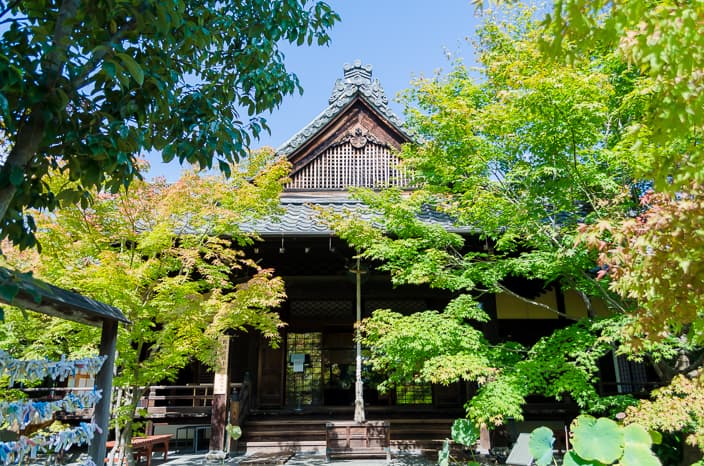
The garden is small but nice. I visited in mid October, most leaves were still green, while some just started turning red. There were cute objects on the moss and on the rocks.
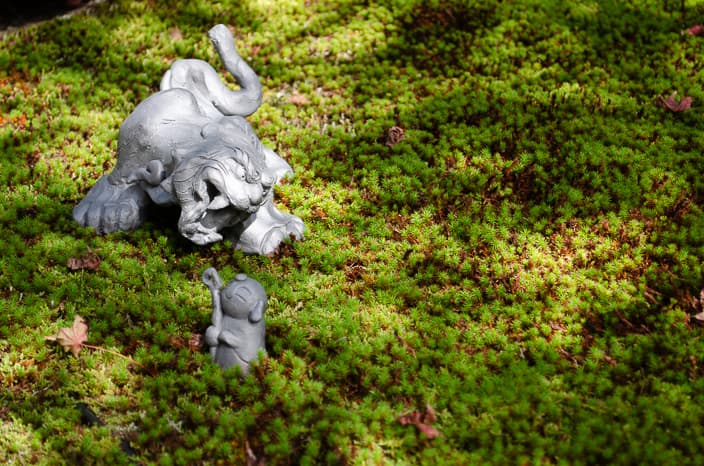
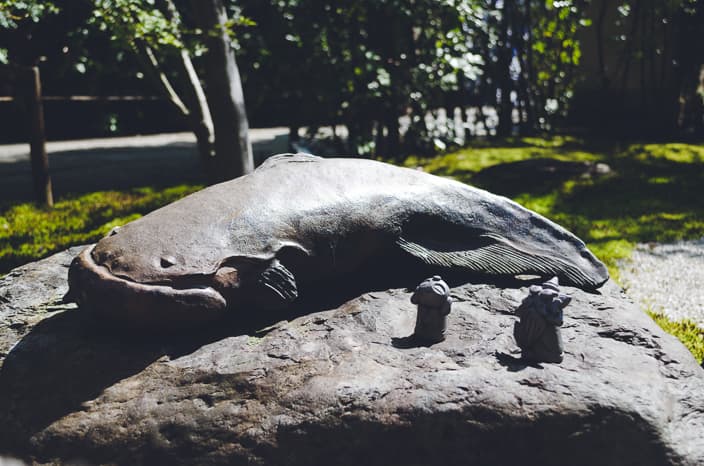
OK, let’s purify myself before visiting Hondo. Ta-da! This is the Hanachozu of Shorin-ji temple. Isn’t this really colorful and beautiful?
The flowers are changed every Tuesday and Saturday. Since the flowers used differ depending on the season, you cannot meet the same Hanachozu twice. Because it was October as Halloween month, a lot of pumpkin-like hananas were floating.
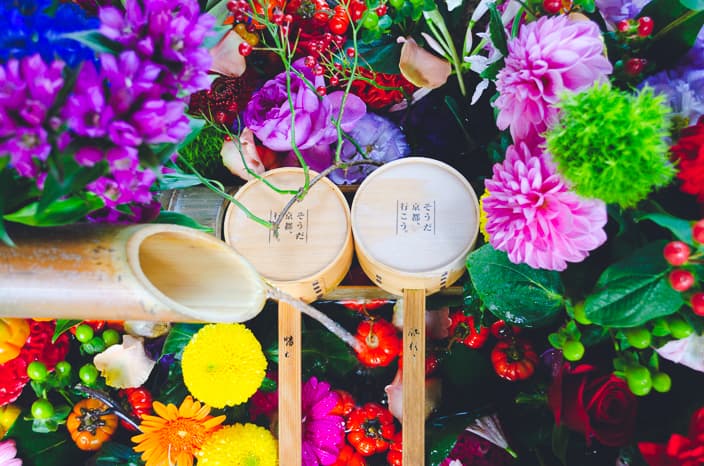
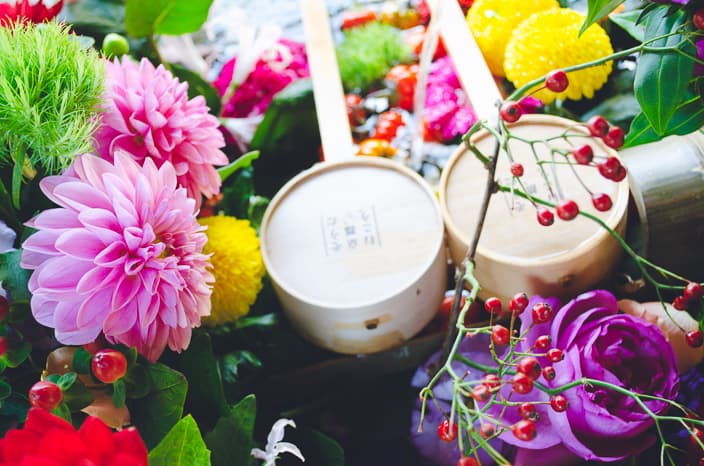
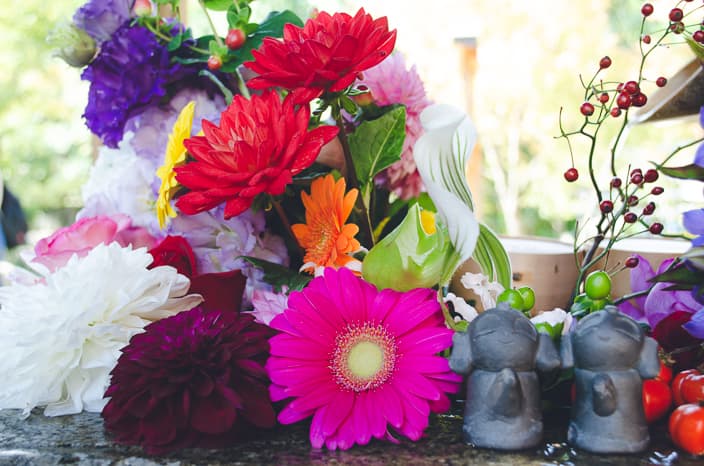
Why don’t you be healed by the beautiful Hanachozu between golf rounds?
Shorinji Temple
| Address | 15-795 Hon-machi, Kyoto-shi, KYOTO |
| TEL | 075-561-4311 |
| Website | http://shourin-ji.org/english/ |


